Don't wanna be here? Send us removal request.
Text
The Disney Story
https://www.my5.tv/the-walt-disney-story/season-1/walt-the-man-behind-the-myth
Lynsey mentioned watching this documentary and I found it really interesting and helpful!
youtube
0 notes
Text
I had a very quick look at these two past papers:
https://net.nua.ac.uk/wiki/_media/library:bronwen_scott_18110_assignsubmission_file_scott_bronwen_1300775_rr.pdf
https://net.nua.ac.uk/wiki/_media/library:rebecca_jenkinson_18189_assignsubmission_file_jenkinson_rebecca_1301233_rr.pdf
I also used the following website to help with my referencing:
http://www.citethisforme.com
0 notes
Text
List of things I can research later on
http://www.businessinsider.com/why-mario-is-the-most-popular-video-game-character-ever-2012-3?IR=T
http://www.speeli.com/articles/view/Why-is-Tomb-Raider-so-popular
http://www.empireonline.com/movies/features/50-greatest-video-game-characters/
Dick Hummer
Lion
0 notes
Text
Research- Disney’s Story
What I understood about Disney is that he was a leader, ambitious, determined, a risk taker, joyful, humble, hard working, people believed in him!
Another book I took from the library was ‘The Art of Walt Disney’- by Christopher Finch. The following is all information I found useful from it:
(I wrote everything word by word in the intention of summarising at the end but I ran out of time).
“Walter Elias Disney was born into a modest Chicago household on December 5, 1901... At the time of Walt’s birth, there were already three children in the family- Herbert, Raymond, and Roy... Later a daughter - Ruth - was added to the family. In 1906, Elias Disney decided to pull up his roots once again and moved his family to a footy-eight-acre farm outside Marceline, Missouri. Then and now, small farms did not offer an easy route to prosperity... Walt and Roy were, of course, expected to help their parents with the farm chores.... It was on the farm that he began to draw... In 1910, Elias sold the property with all its livestock and moved the family once again - this time to Kansas City, ninety-five miles southwest. There Elias bought a newspaper delivery business. Naturally, Walt and Roy were co-opted into contributing their services and found themselves getting up at 3:30 in the morning to meet the trucks....Roy, eight years his senior, would soon be in a position to escape this drudgery, but he maintained his close relationship with Walt”.
“The hard work continued, but Walt’s interest in drawing persisted, as did a growing taste for theatrical expression. In a rare gesture of indulgence, Elias allowed Walt to enrol for Saturday morning classes at the Kansas City Art Institute.... Thus, at the age of fourteen, Walt acquired a smattering of formal art training. Just as important in view of later developments, was Disney’s relationship with one of his schoolmates, Walt Pfeiffer.... Disney returned to the United States in 1919.... He headed for Kansas City and found work at a local studio where he made friends with another employee, Ubbe “Ub” Iwerks, a young man of Dutch descent who was to become the most important associate of his early career. Iwerks was a talented draftsman, and it soon occurred to them to go into business for themselves”.
“Disney was ambitious and and immediately started work on a series of updated fairy tales.... In the course of producing these short cartoons, Disney began to build up an able staff”.
“On arriving in Los Angeles, Disney moved in with his uncle.... Two months after his arrival, Margaret J. Winkler, a New York distributor, commissioned a series of Alice Comedies which Disney would produce.... The initial contract called for one Alice Comedy a month.... Further additions to the staff had to be made to accommodate Alice’s success, and one new employee was an Idaho girl named Lillian Bounds.... A romance blossomed and, in July 1925, the pair was married. Roy Disney had meanwhile married Edna Francis, his Kansas City sweetheart”.
“By 1927, it became that Disney had to find a replacement for the Alice movies if the Studio was to remain viable.... Apart from anything else, the use of live action placed severe restrictions on the artists; sense of fantasy, and Walt was anxious to get back to full animation. As the last of the Alice films were completed, work began on a new series which was to feature the adventures of Oswald the Lucky Rabbit. By now Disney had completely abandoned his career as an animator to concentrate all his energies on the production side of business”.
“Oswald was a likeable little creature, all soft curves and energy. He had no voice, of course - this was still the silent era - but the adventures he found himself caught up in were, to judge by surviving examples, inventive and well constructed for the time. The Disney animators were becoming very skilled.... With Oswald, Disney equaled - and even surpassed - the best productions of his competitors”.
“Disney had signed a one-year contract with Charles Mintz, who had married Margaret Winkler in 1924... The advertising announced “Oswald the Lucky Rabbit, created by Walt Disney,” but- and this proved to be the fatal flaw in the contract - Oswald’s name belonged to Mintz.... As the five years moved to a successful conclusion, Walt Disney and his wife embarked for New York, where he expected to renegotiate the contract... Instead of offering an improved contract, Mintz actually proposed one which would entail a reduction of income for the Studio. This was clearly absurd, since Oswald had been very profitable. Obviously, Disney could not accept such a deal, and the reality of the situation became apparent. Mints had decided to repossess Oswald. The character’s name belonged to him, and his brother-in-law had persuaded several Disney’s best animators to take over production of the Oswald series.... He figured that if he could hire away Disney’s best men, he would be getting the same product for a reduced outlay. Disney was shocked and hurt”.
“Walt Disney is said to have conceived Mickey on the train, returning to Hollywood from his angry encounter with Mintz..... What we can be reasonably sure of is that the Mickey Mouse who made his debut in New York in 1928 resulted from a collaborative effort between Disney and Ub Iwerks. It is probable that Iwerks, easily the best animator of the day, was largely responsible for defining Mickey’s physical characteristics.... Certainly a character such as Felix the Cat was immediately recognisable, but he did not have a real personality. Mickey did have one, and an audience could identify with him in much the same wait would with a human performer.... The gift of personality was probably Disney’s own contribution to Mickey. Iwerks made the whole thing possible through his skill as a draftsman, but it was Disney’s control over the situations in which the Mouse found himself that allowed this personality to develop.... In many ways he may even have viewed Mickey as his alter ego”.
“ The Disney brothers had managed to save enough money to go ahead with the first Mickey Mouse cartoons even without distributors, and work began almost at once. This was carried out in secret at first, since the Oswald contract had not yet completely expired. On October 23, 1927, a bombshell had hit the motion pictures industry. Warner Brothers released The Jazz Singer, and the sound era became a reality.... As the first Mouse cartoon went into production, the industry was still in chaos... He wanted Mickey to have a real impact, and he saw the future lay with sound.... Walt Disney, prompted by circumstance and predisposed by temperament, was to become the first producer to find a genuinely creative way of using sound”.
“Disney was also passionately interested in audience response, convinced that everyone at the Studio could learn a great deal about humour by studying the reactions of a group of laymen”.
“In 1930, another personnel crisis hit the Studio. Ub Iwerks and Carl Stalling quit the Disney operation”.
“The Studio was barely breaking even, and in 1932 another innovation drove costs still higher. In that year, Disney released a Silly Symphony called Flowers and Trees. This cartoon caused something of a sensation in the industry. It was in full colour”.
“In 1933, Hurter designed the settings and main characters for what turned out to be the greatest Disney success up to that time- the famous Three Little Pigs.... The movie was a smash... The animation was excellent and the characters had a real existence of their own”.
“The following year, 1934, saw the production of several excellent Silly Symphonies, including The Tortoise and the Hare, The Grasshopper and the Ants and The Wise Little Hen- all of which were moral fables and showed just how proficient the Studio had become at structuring a story and establishing character”.
“The initial success of Mickey Mouse and the Silly Symphonies did not satisfy Disney for long, and as early as 1934 he began to think seriously about making a feature-length animated film... Disney was anxious for an opportunity to work within an expanded format- a structure that would allow for more elaborate and leisurely character development, that would give him chance to evolve more complex plot ideas and greater naturalism... He was planning to take a fairy story and bring it to the screen with a kind of magical realism that was beyond reach of live-action movies. As everyone knows, the story Disney chose for his first feature was Snow White and the Seven Dwarfs.... No one can say just when Disney began to think about Snow White, but by the summer of 1934 his ideas were beginning to take concrete form.... The following discussion of the dwarfs:”
0 notes
Text
History of Animation- Research from a Book
I took out a book from the library called ‘The History of Animation’- by Charles Solomon and the following is all information I found useful from it:
(I wrote everything word by word in the intention of summarising at the end but I ran out of time).
The first section of the book was called ‘Precursors and Experiments’.
“Animation (and all filmmaking) emerged from a fascination with light and motion- a series of interlocking dancers’ rings that began with the “new science” of the seventeenth century”
“Inventor Athanasius Kircher published his Ars Magna Lucis et Umbrae (The Great of Light and Shadow) in Rome in 1645. In the last chapter he described a new invention- the magic lantern, a simple device that consisted of a box containing a light source (either a candle or a lamp) and a curved mirror...... In the revised edition of the Ars Magna (1671), he explained how a revolving glass disc with a series of painted images could be used to present a story to an audience”. “This was not animation yet”.
In 1735 Pieter van Musschenbroek “demonstrated that a revolving disc, similar to Kircher’s but with sequential images, could produce a illusion of motion. In 1736, he astonished the visiting Abbe’ Nollet with visions of a windmill with revolving arms, a man raising his hat and a woman bowing. Later, Musschenbroek used multiple lanterns, synchronised slide changes and long slides (which he slowly passed before the projecting beam) to present more elaborate illusions, such as a storm at sea: the first animated entertainments”.
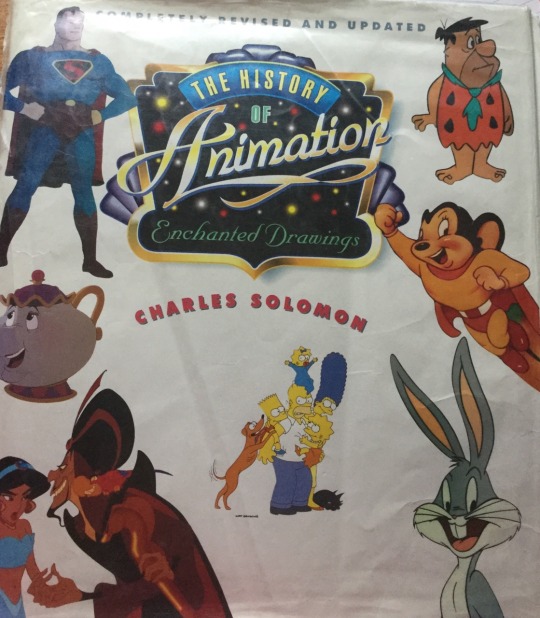
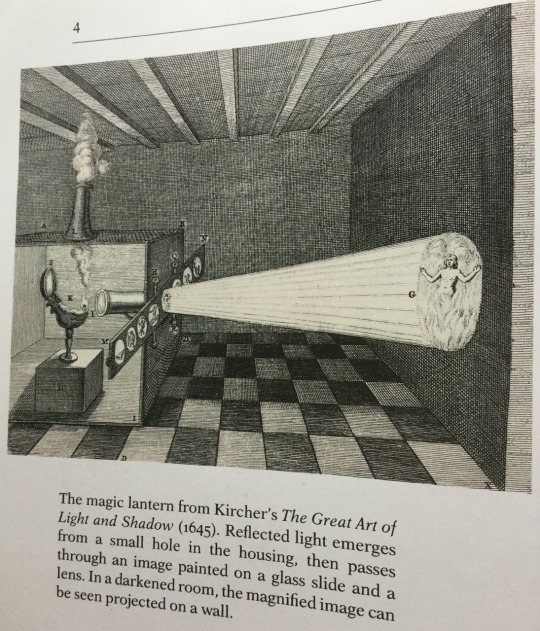
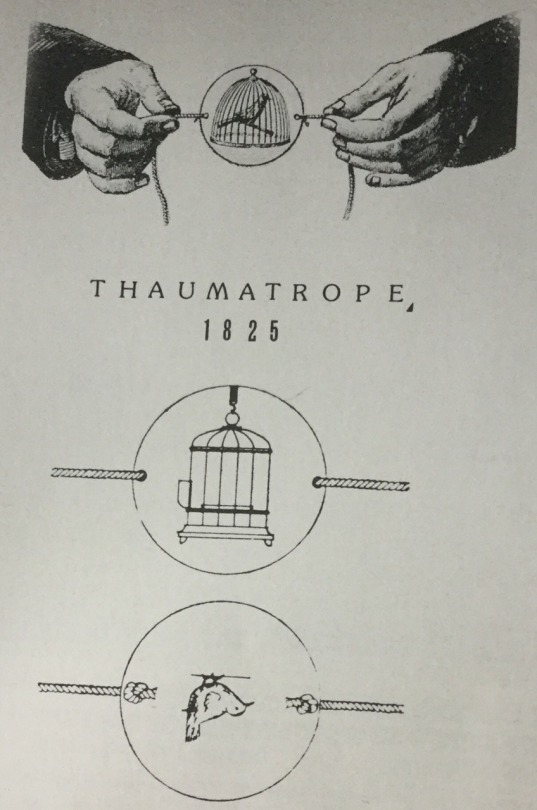
“The nineteenth century was also the great era of “philosophical” or animation toys, beginning with the invention of the thaumatrope in 1826, probably by John Ayrton Paris..... It consists of a disc with an image painted on each side and threaded with a string. When the disc is spun, the images seem to combine: the wig appears on the bald man’s head; the jockey astride the horse. Advertised as “rounds of amusement,” thaumatropes proved quite popular”.
Joseph Plateau invented the “phenakistoscope or fantoscope, a more complex animation device that depended on the persistence of vision, between 1828 and 1832. The phenakistoscope was made up of two discs; one with sequential images painted around its edge, the other with slits. When the discs were spun at the correct rates, the viewer saw a moving image. The slits acted as a shutter; the spaces between them provided the interruptions the eyes requires to melt the images into motions”.
“In 1834, William Horner of Bristol created a device he called the Deadalum, or Wheel of the Devil. Nothing much was done with the invention until the 1860s, when it was renamed and marketed as the zoetrope, or Wheel of Life. Like the phenakistoscope, the zoetrope depended on the persistence of vision. A strip of paper with sequential images was placed inside a hollow drum with slits in its sides. When the drum was pun, the images, seen through the slits, appeared to move. The zoetrope also proved to be a popular amusement, and hundreds of strips were printed depicting every sort of action from a real balancing a ball on its nose to a black boy biting into a slice of watermelon”.
“Invented in 1868, the kineograph, or flip book, proved to be one of the simplest and least expensive but most popular and durable animation toys. A flip book consists of a few dozen sequential drawings or photographs, bound in order that the viewer flips through with his thumb: the rapidly changing images appear to move. Flipbooks were sometimes given away as advertisements or as bonuses with merchandise”.
“Thomas Edison took the principle further with the mutoscope, a sort of mechanical flipbook he devised in 1895... It remained little more than an amusement park novelty, although some of the original mutoscopes were still in use in the early 1960s and the independent animator Oskar Fischinger did animation for a mutoscope as late as 1946″.
“The most advanced and sophisticated of all the animation devices was the praxinoscope, invented by Emile Reynaud in 1877. Like the zoetrope, the praxinoscope involved a rotating drum and a strip of painted images. Instead of staring through slits in the drum, the viewer saw the motions reflected in a series of mirrors. Around 1882, Reynaud combined his invention with a projector and began drawing animated storie, first on long strips of paper, then on celluloid. (No other artist would draw directly onto film until the mid 1930s, when Len Lye and Norman McLaren began experimenting with camera less animation in England)”.
“Reynaud’s place in the history of animation remains the subject of considerable debate. He presented coloured, animated films with story lines and synchronised sound tracks long before anyone else... He was not a great draftsman or animator”.
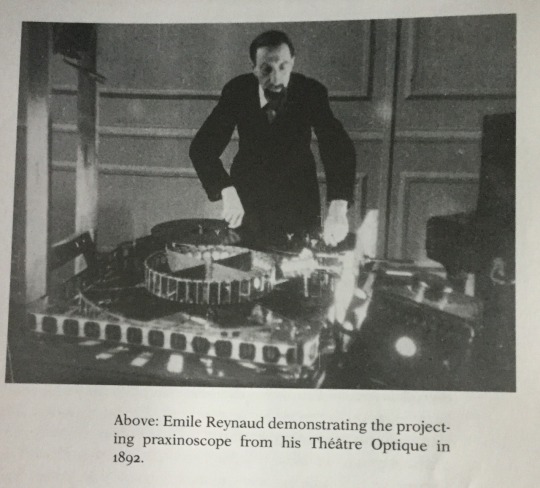
“The career of James Stuart Blackton links many of the ancestors of animation. Relatively little is known about his life, and much of the information that does exist is unreliable, as Blackton often lied about his age and background. He was born in Sheffield, England, on January 4, probably in 1875, and came to America as an infant, after the death of his father..... In 1900, Blackton returned to Edison’s laboratory for another animation project, “The Enchanted Drawing.”... The effects in “The Enchanted Drawing” were achieved by stopping the camera between frames and making substitutions, rather then by conventional animation. The same technique was used in a number of early motion pictures known as trick-films”.
“Blackton was apparently interested in the possibilities of frame-by- frame filmmaking...He continued his experiments in 1906 with “The Humorous Phases of Funny Faces” generally considered to be the animated film.... “Humorous Phases” is composed of several unrelated vignettes, some them obviously adapted from Blackton’s vaudeville chalk talks.... Not a great film, but it was a beginning.... Blackmon died in 1941 after being hit by a bus”. (Videos for The Enchanted Drawing and The Humorous Phases of Funny Faces are below).
youtube
youtube
“J. Stuart Blackton may have invented animated filmmaking, but it was Winsor McCay who demonstrated the artistic potential of the new medium and inspired generations of animators. An extraordinary draftsman, McCay was not only the greatest of the pioneer animators but one of the undisputed masters of the newspaper comic strip and a respected editorial cartoonist”.
“McCay was born on September 26, in Spring Lake, Michigan, probably in 1867. He studied drawing and painting, and his cartoons and animation are distinguished by their solid three-dimensionality and extraordinary sense of perspective.... McCay declared: “The principal factor in my success has been an absolute desire to draw constantly.” His children helped as models for Little Nemo and the Princess of Slumberland.
“In 1905, McCay also began his masterpiece in the Herald: “Little Nemo in Slumberland,” one of the most extraordinary illustrated narratives ever created. Again, the story line is simple. In his dreams, Nemo visits the sometimes beautiful, sometimes frightening wonders of Slumberland. He shares adventures with the other major characters... In the last panel, Nemo awakens- sometimes reluctantly, sometimes in fright. Many experts rank “Little Nemo” second only to George Herriman’s “Krazy Kat” in the animals of newspaper comic strips.... “Little Nemo” is a series of plotless episodes involving main characters from the strip. From the opening shot of Flip’s profile, when the words :Watch me move” appear, there is constant motion on the screen. Flip and Impy run and tumble like circus clowns. McCay did not use background, but suggested movement in perspective by by enlarging or shrinking characters.... No one knew what to make of “Little Nemo.” No one had seen anything like it.... McCay’s sophisticated animation depicted fully rendered characters who moved smoothly and realistically”.
youtube
“McCay chose a subject that couldn’t be faked: a prehistoric animal. The result was “Gertie the Dinosaur” (1914), arguably his greatest achievement- and a landmark in the history of animation. McCay made more than five thousand drawing s for “Gertie,” again working in India ink on rice paper. He hired John Fitzsimmons, then a young man in his teens, to retrace the background in each drawing. Meanwhile, McCay strove to improve hi animation, checking his own breathing with a stopwatch to time Gertie’s”.
This next section of the book was called ‘The Silent Era, 1914-1928’.
“While many of the early animators were talented draftsmen, they had no training unmaking their drawings more convincingly. There was no place to learn animation except the studios, where the men learned from each other and by trial and error.The speed of production precluded the hours of drawing and redrawing required to perfect a movement. The early studio cartoons resemble modern kidvid programs: something to be finished, shown and forgotten in a short time on a small budget.... The crucial weakness of the early shorts is that they were uninteresting as films. The artists did not know how to construct a film (or even an individual gag), giving it the necessary beginning, middle and end. Dick Hummer recalled: “We used to look at our own work and laugh like hell.... Or mistake was that we weren’t establishing anything first.. Disney always very carefully planned things, so that everything was understandable, and one thing happened after another, logically”.
“By the end of Would War I,new animators and new studios were coming to the fore.... Max and Dave Fleischer created some of the brightest and most imaginative cartoons of the silent era. Man Fleischer was born in Vienna in 1883... Around 1915, the two brothers began their first experiments with the rotoscope, a device that enabled an animator to trace live-action footage frame by frame.... The Fleshier were not the first to use the images of the artist creating a character, or to combine live-action and animated figures, but they did both with exceptional imagination and wit... The Fleishcers achieved some of their striking combinations of live action and animation by using black-and-white photographs of objects and landscapes as backgrounds and placing cels over them. In “Bedtime” (1923), Ko-Ko browns taller than a skyscraper and walks through Manhattan, searching for Max. At one point, he reaches into a multistory building and rummages inside, his fingertips emerging through the windows. Similarly, photographs of the desks and chairs in the studio enable the animators to turn their character loose within its confines”. (The video is below).
youtube
“The most popular, best-animated and financially most successful cartoon character of the silent era was the Pat Sullivan studio’s irrepressible Felix the Cat.... Born in Sydney, Australia, in 1887, Pat Sullivan.... Having learned animation techniques from Barre’, Sullivan opened his own studio in 1915 to produce War Band pictures. The next year, he hired Otto Messmer to work on a series based on the “Sammy Johnson” strip and on the films of Charlie Chaplin.... On a free-lance basis, Messmer created “Feline Follies,” in which the as yet unnamed Felix made his debut. I was successful enough for \paramount to request another of the same: “Music Mews” (1919). After the success of this film, producer John King gave Felix his name... Messmer made the character solid black because he wanted to avoid drawing a lot of outlines; he also found that solid masses moved better on the screen.... Bill Nolan helped Messmer redesign Felix in 1922, giving the cat his familiar rounded and appealing shape. What set the Fe;ix cartoons apart from their more prosaic counterparts was their use of animation.... Something subtler than facial expressions contributed to Felix’s appeal: a unique style of movement that expressed his personality. Using principles explored by McCay and Chaplin, Messmer gave Felix a way of moving as recognisable as any silent comic’s. The Felix shorts contain the most sophisticated character animation done before Disney’s breakthrough film “Three Little Pigs” (1933). By 1925, Felix was the most popular cartoon character in the world.... Felix calmly defied perspective, gravity and logic to manipulate the world around him. Anything could- and did- happen. Felix’s tail was interchangeable with question marks and exclamation points, depending on what was needed.... Felix was still near the zenith of his popularity the he met his unhappy end. On March 26, 1932, Sullivan’s wife fell seven stories to her death when she leaned too far out of a window. Sullivan, who had suffered from a drinking problem for years, lapsed into acute alcoholism and died of pneumonia in February 1933.”
youtube
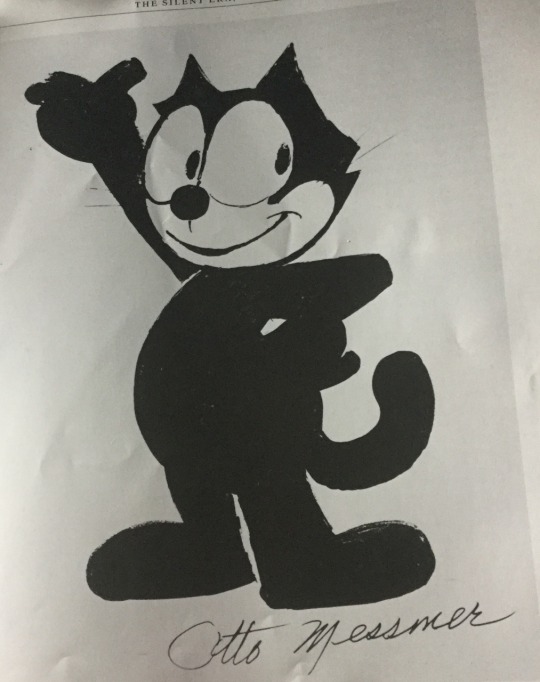
Useful links I looked at:
http://www.artograph.com/infocus/felix-the-cat/
http://www.felixthecat.com/history.html
https://en.wikipedia.org/wiki/History_of_animation
https://en.wikipedia.org/wiki/List_of_Disney_theatrical_animated_features
1 note
·
View note
Text
Summary
Lynsey gave great advice to research into Felix the Cat, Disney’s story, a great Disney documentary which I watch on Channel 5.
I looked into Animation studios such as Pixar and Studio Ghibli and well know animation films.
0 notes
Text
A list of well known Animation Studios and Animated Movies
I came across this site while searching for some 2D animations and I found it useful to know a bit more about some of these studios. The list is called The 50 Best Animation Studios in The World.
https://www.gamedesigning.org/animation-companies/
1. Pixar- On their site it says that it’s ‘an American computer animation film studio...The Walt Disney Company bought Pixar in 2006, and currently owns the studio’. (Source: http://pixar-animation.weebly.com ). Below is an interesting video I found quite sometime ago, as I am subscribed to this channel, while I was just doing some research which explains their story well. It’s a fascinating struggle from which 3 people created the studio, John Lasseter described in the video as the artist, Ed Catmull described as the scientist and Steve Jobs as the business man. The idea of a film from a toys point of view to Disney was pitched, they were on board. Pixar had a set of rules to differentiate from the well known classic Disney film, amongst the rules were no songs and no love story. After bashing heads with Disney production ended but Jon never gave up. It took almost 5 years of making to became a success but that wasn’t the end as based on a deal made with Disney the videos says that Pixar ‘didn’t have the right to the profits for the merchandise’. Further problems with Disney occurred and only after a change of leadership from Disney’s behalf did the future look bright.
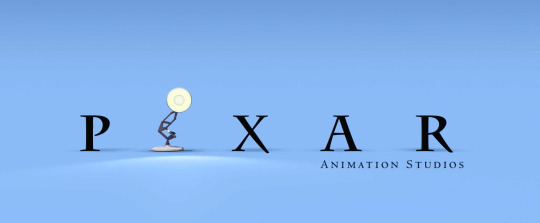
youtube
2. Walt Disney Animation Studios- The game designing.org site describes the studio as ‘Disney’s acclaimed studio has been making feature films since 1937... They have been behind some of the highest grossing animated films of all time, including The Lion King and Aladdin’.
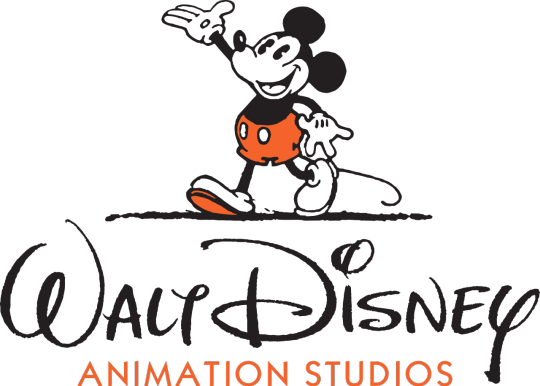
3. DreamWorks Animation- produced work such as Chicken Run along with Aardman Animations. Shrek, How to Train Your Dragon, Madagascar and others. Wikipedia mentions that ‘DreamWorks Pictures is an American film production label of Amblin Partners. It was formerly distributing its own and third-party films by itself’ and that it was founded in 1994.
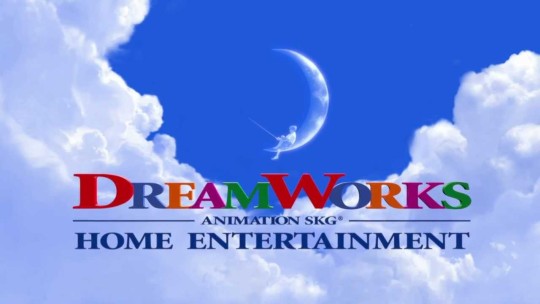
4. Studio Ghibli- The gamedesign site explains that ‘Out of the 15 top grossing anime films made in Japan, eight of them have been their work’. Animations such as Spirited Away, Howl’s Moving Castle and My Neighbour Totoro. Wikipedia states that it was founded in 1985.
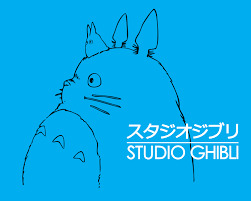
5. Cartoon Network Studios- Shows such as The Powderpuff Girls, Adventure Time and Dexter’s Laboratory. Founded in 1994, wikipedia.
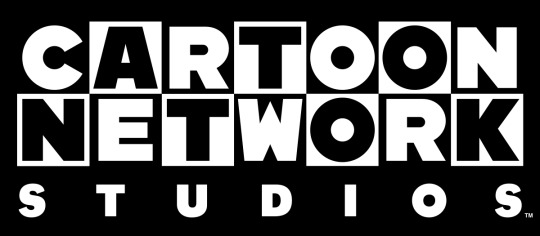
6. Blue Sky Studios- Horton Hears a Who!, Ice Age and Robots. From their site it states ‘In February 1986, six of these innovators sat together in a cramped apartment and fueled only by their determined enthusiasm, decided to pool what little money they had to start their own computer animation company’.
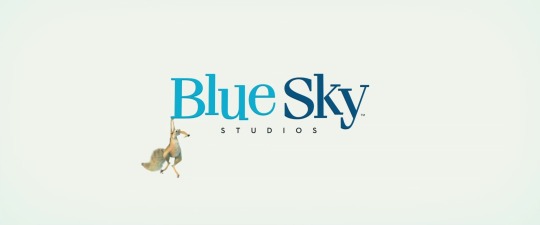
7. Nickelodeon Animation Studios- Spongebob Squarepants, Farly Odd Parents and founded in1990, wikipedia says.
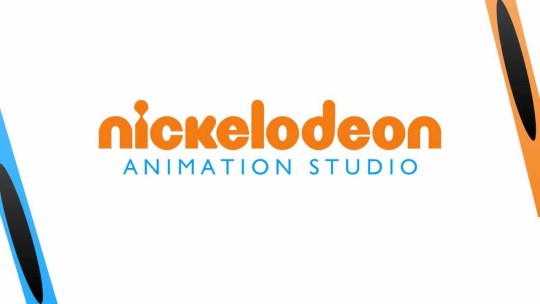
8. Warner Bros Animation- The gamedesigning site mentions that ‘They grew to compete directly with Disney thanks to Looney Tunes and its popular characters like Bugs Bunny and Daffy Duck’. Founded in 1980, wikipedia.
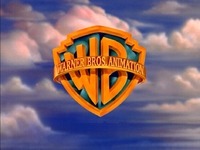
9. Aardman Animations- They are very well known for their stop motion animation from Wallace and Gromit to Morph. Gamedesigning site says ‘Although they do a lot of television series and short films, Aardman Animations has collaborated with DreamWorks Animation’.
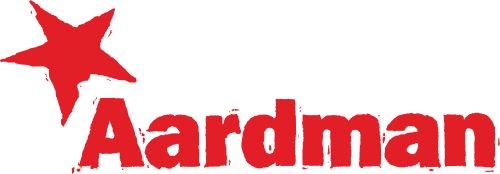
After that the site also recommended this related topic named The 100 Best Animated Movies from this link https://www.gamedesigning.org/best-animated-movies/
I decided since I’ll be focusing on 2D Characters that I would make note of a few from this list which I like as reference. Beside it I will also write what was said on the site.
101 Dalmatians- Disney 1961
Fantasia 2000- Disney 2000
Spirited Away- 2002 Disney, Studio Ghibli as the production company
Beauty and the Beast- 1991 Disney
The Lion King- 1994 Disney
The Little Mermaid- 1989 Disney
Princess Mononoke- 1999 Miramax
Anastasia- 1997 20th Century Fox
The Simpsons Movie- 2007 20th Century Fox
Mulan- 1998 Disney
I made a start on this little list as I need to have in mind a few characters I am interested in in 2D animation to do more research on them.
0 notes
Text
Summary and feedback
I began to look into the history of animation. The very beginning with the flip book and Gertie the Dinosaur all the way to The Simpsons and more. I watched a few of the older animation videos to get a feel of what it was like.
I am again catching up a bit too late but here is what Lynsey mentioned in the last tutorial I had with her, quite close to deadline.
Research about iconic characters such as Mickey Mouse and Bugs Bunny and focus on the history of animation for the first chapter. 2D Disney and comic strips. Felix the Cat. Animation use to be funny and Disney made it more empathetic and made a change. Grab a couple of books such as ‘The Illusion of Life’ which I am planning on using for later on in the essay, history of animation. Look at Gertie the Dinosaur and the animator, Little Nemo. Focus before the golden age of animation for now. Check out books, articles, a useful documentary on Disney and more.
0 notes
Text
Research- History of Animation
I have left the research/ updating of this unit a bit late as I have had doubts but I am working through them and making the best with the time that I have.
This is a really interesting site I found in the last month or so which explains the history of animation (I have also found this useful for the other projects we are currently doing). http://history-of-animation.webflow.io
It goes through describing each milestone. We’ve been trying to create movement since ‘we’ve been able to draw’. Here are a few I found interesting:
From 3,000 B.C. with the SHAHR-E SUKHTEH, which is described as ‘A bronze-age pottery bowl depicts goats leaping’.
To the 1868′s FLIP-BOOK.
To 1914′s Gertie the Dinosaur and is described as the ‘first cartoon to feature an appealing character’ (video below).
1928′s Steamboat Willie which features Mickey Mouse. The site mentions it becoming ‘the first cartoon with the sound printed on the film, and is the first notable success for Walt Disney Studios, founded in Los Angeles in 1923′ and also shows an original sketch and storyboard (video below). Disney is a featured artist on this site for his the impact he had. It says that along with his brother Roy they co-founded Walt Disney Productions. Disney of course created Mickey Mouse and he was the original voice for Mickey. Alongside his staff they also created other characters such as Donald Duck and Goofy.
Between the 1930-1950s the site describes this period of time for animation as THE GOLDEN AGE OF AMERICAN ANIMATION with the ‘rise of Walt Disney, Warner Brothers, MGM and Fleischer’.
1930 Warner Brothers founded Merrie Melodies.
In 1937 Disney released Snow White and the Seven Dwarfs, ‘the first animated feature to use hand-drawn animation’.
Between 1960-1980s the sites describes it as THE AMERICAN TELEVISION ERA.‘Studios created many cartoons for TV, using a “limited animation” style’. I looked up what that meant and this is what I understood from this site, https://www.thoughtco.com/what-is-limited-animation-140520 It’s a technique used to ‘limit the effort involved in producing the full animation’ so basically it involves ‘reusing all or parts of existing animated frames while drawing new frames only when necessary’. Often used in Japanese animation and ‘Flash in particular makes limited animation techniques extremely simple’.
In 1960 ‘Hanna-Barbera releases The Flintstones, the first animated series on prime-time television’and in 1961 she also debuted Yogi Bear.
1964 ‘DePatie-Freleng Enterprises wins the Academy Award for Best Short Film for The PinkPhink (of the Pink Panther series)’.
1980 – 2014 MODERN AMERICAN ERA. CGI revolutionized animation.
1984 The Adventures of Andre & Wally B ‘was the first fully CGI-animated film, created by The Graphics Group, the precursor to Pixar’.
The Simpsons in 1987 created by Matt Groening.
‘Toy Story, the first fully computer-animated feature film, was released’ in 1995.
Lastly in 2014 Big Hero 6 ‘is the first Disney animated film to feature Marvel Comics characters’. (Below the videos are just a few pictures I found online to illustrate some of the examples given).
youtube
youtube
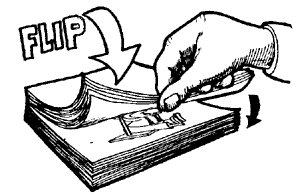
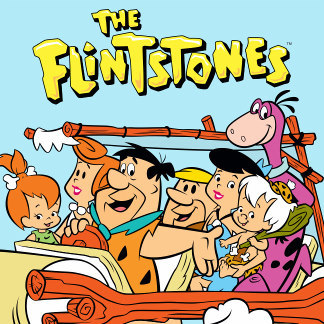
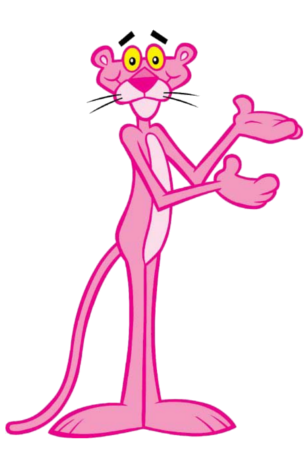

(I think it was Jon that showed us this picture of how The Simpsons evolved over time and it’s interesting to see).
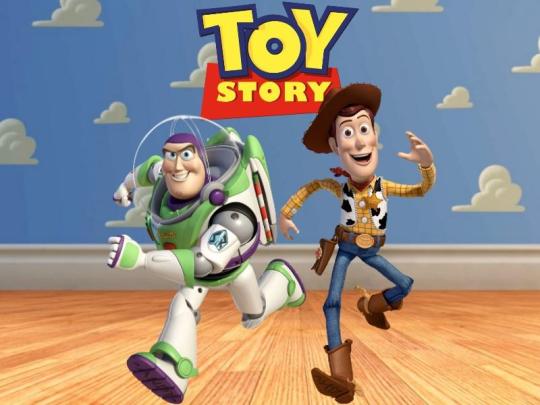
0 notes
Text
Summary
I looked into a few examples of freelance animators and what is required to be able to do character design.
I then had a tutorial with Lynsey which helped with narrowing down my research. She mentioned looking into the history of animation, what makes a character appealing, does sound play a part and so on...
0 notes
Text
Research and Feedback
I had a couple of initial ideas I wanted to research, either character design or mental disorders within animation and how they are represented. Examples such as Pinocchio’s constant lying, Peter Pan and his syndrome, Eeore’s depression.... and so on. Examples on here:
http://www.toptenz.net/top-10-mental-disorders-of-cartoon-characters.php
https://www.buzzfeed.com/leonoraepstein/disney-characters-who-really-need-to-see-a-psychiatrist?utm_term=.jjyebBEMg#.egjzGj8QB
https://www.psychologytoday.com/blog/how-do-life/201605/the-peter-pan-syndrome
Character and freelance examples
An example I have used on another blog is Loish as I am fan of her work and she is a freelance animator and illustrator, http://loish.net She studied animation, she gets commissions, she has a book with how she works... She’s basically a brand.
Another really great character designer is Borja Montoro who works with Disney, this is his site http://borjamontoro.blogspot.co.uk
Arnold Tsang, https://www.artstation.com/artist/arnistotle is a concept artist and he has character designs for a game called Overwatch which I am a big fan of, mainly for the character design aspect of it.
Chris Sanders has quite a list, from working at Disney, to Dreamworks. http://www.imdb.com/name/nm0761498/bio?ref_=nm_ov_bio_sm
http://www.animationcareerreview.com/articles/concept-artist-career-profile I think I had another link which I can’t find which describes more on character designing. In any case this is what I made a note of: you must be imaginative, have a knowledge in animation, you can work in a studio or freelance or company, mainly animation, games and illustration.
http://www.creativebloq.com/character-design/tips-5132643 http://pixar-animation.weebly.com/character-design.htmlUseful links for tips on character design.
Tutorial
This is what I mentioned to Lynsey in the feedback session:
I wanted to focus on character design as I really love doing it, freelance carreer possibly. In the essay I would be giving examples such as Loish, the processes and skills needed, the work environments, focusing on 2D
Feedback
This was her feedback:
She likes my initial idea so she said to research more into the history of animation, what makes an iconic character, does the sound help? Shape theory, possibly look into games characters, get books from the library, check out more contemporary animations and so on. I found this really helpful.
0 notes
Text
Summary
Lynsey went over what is needed of us for the final report. She gave examples of previous student’s work, she covered the different types of reports we could chose from, providing a table of contents, conclusion, introduction and so on.
0 notes
Text
Continuing from the previous post
Choosing a topic
Your final research report should represent the gathering of weeks of work. Decide the right topic. Must be something you’re genuinely interested in but also be realistic. Enough information available for you to produce a 5000 word report on this topic? Will it feed into your studio practice in some way? Is your topic appropriate for an academic paper?
Advice- ‘If I have seen further it is by standing on the shoulders of Giants.’ Sir Isaac Newton, in a letter to Robert Hooke, 1676. Your report must be the product of research- ‘It may be tempting to avoid the use of another person’s work altogether. However, this is unadvisable. Even though you will have your own hypothesis and opinions on a topic, it is essential to back up your positioning with factual findings or research from experts.’ (London School of Marketing, 2015).
Particularly important if you take a strong or controversial stance on a topic. Take care not to make sweeping statements or generalisations with no evidence, e.g.:‘Disney fairy tales are propaganda for the patriarchy’. INSTEAD if you can find a credible source in which these opinions are stated, you can cite this source to back up your own ideas, e.g. Zipes (2011) argues that Disney’s fairy tales ‘impose’ a vision of ‘the better life’ on their audience, thus reinforcing stereotypes and helping to maintain the patriarchal order. You may have a fantastic theory, argument or idea – if so, you need to find out if someone else has already thought it. (And, if they have, give them credit through the Harvard referencing system) https://net.nua.ac.uk/mod/page/view.php?id=327 Don’t miss out important theories, developments, practitioners, an understanding of history associated with your topic.
Harvard Referencing
‘Many students do not fully understand why [their research report] needs to be referenced. The answer is two-fold. For one, anyone who has come up with an original thought or piece of research deserves credit for it. Secondly, it is important to you and your career to avoid any claims of plagiarism.’ (London School of Marketing Blog, 2015). Conducting Harvard referencing makes your work seem more credible and academic research for your report. Basically the essay will contribute to a larger body of existing work so show your awareness for it and be respectful of the people who created it. It demonstrates the scope of your reading, viewing and listening around a particular topic. (How would you feel if someone based their paper on your work… and gave you no credit for it?)
Harvard has 3 stages, Citation, Reference and Bibliography:
Citation- A CITATION appears within the main text of your writing and enables a reader to find the source of the information you are presenting. It’s a shortened form of the REFERENCE that appears in your BIBLIOGRAPHY. And it comes in 3 varieties- According to McKee (1997) the best characters are complex. The best characters are complex (McKee, 1997). ‘Shallow, non-dimensional people exist… but they are boring.’ (Mckee,1997, p. 103) If you quote a source directly, i.e. word for word you need to place the quotation inside quote or speech marks (and give a page reference if it’s from a print source). Very long quotes are not a good idea – it’s far better to process the information you’ve discovered and then produce your own. For a summary there is no need for quote or speech marks as you summarises information in your own words. Does not mean copying and pasting the original text – then changing a few key words. Must still be cited! i.e. (McKee, 1997)
Reference- This is a record of the material you have consulted. The citation is drawn from this reference. Eg. McKee, R (1997) Story: Substance, Structure, Style and the Principles of Screenwriting. New York: Harper-Collins- (McKee, 1997, p.103) Depends on what type of media but Eg. PRINT BOOKS: 1. Author name 2. Date of publication of YOUR COPY (not necessarily the original date of publication) 3. Edition (only mention if not the 1st) 4. Place of publication (CITY, not COUNTRY) 5. Name of publishing house FILMS- TITLE-YEAR OF RELEASE-DIRECTOR-COUNTRY OF PRODUCTION-NAME OF PRODUCTION COMPANY-TYPE OF MEDIA, I.E. [DVD]
Bibliography- is a list of your references, in alphabetical order by (preferably) author surname or (in the case of films, TV shows, and several websites) title. Don’t separate into categories (i.e. films, books, podcasts): the Harvard style is a single list [and information in square brackets lets the reader know what type of media you’re referring to]. The important thing is that the reader can use the citation to find the reference (as easily as possible) in your bibliography. A couple of links Lynsey gave to help out https://net.nua.ac.uk/wiki/library:harvard_referencing https://net.nua.ac.uk/mod/page/view.php?id=319
Primary research
Types and examples of evidence needed:
-Online surveys or questionnaires- Screenshots with full transcription of questions and answers
-Interview by email or questions asked on social media- Screenshots or full transcription; date of interview
-Interview carried out in person- Must be recorded and typed up (full transcript submitted in appendix); date of interview
Also
-Watch films, documentaries, director interviews; listen to podcasts or radio broadcasts -Read magazines/journals (online or archived in libraries) -Visit the library (NUA students can have a reader pass for the UEA library, and you can also join the Forum library) -Use Google Scholar to help you search the web for academic material (http://mashable.com/2014/12/03/google-scholar-guide/%234y1y75YpyiqS). -Visit art galleries, exhibitions, film festivals
TASK
You now have 3 minutes… To make a list of anything and everything you find interesting. We retain (and understand) information more easily when it’s interesting. Now go through your list again and put a mark by anything that might possibly link to animation. Put another mark by anything that specifically links to your own animation practice.
Another quick task is noting down some of the reasons you chose this course, why you’re interested in animation, and what you’re hoping to do in the future. Include the names of any films or animators or other visual artists who inspire you. What has been your favourite part of the course so far?
Over the next two weeks: Spend time thinking about potential topics for your research report and come to your individual tutorial with notes. You can change your idea later on as ideas/interests can, and do, change/develop.
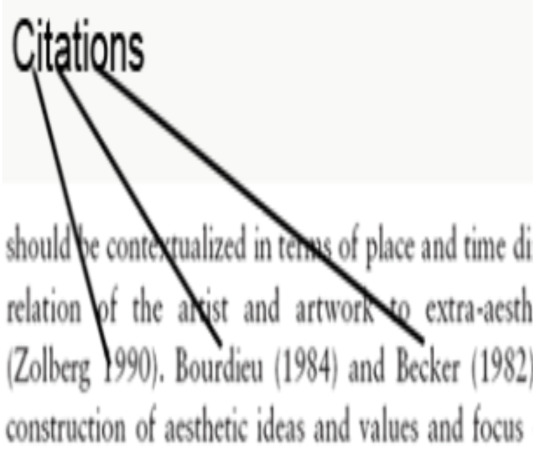
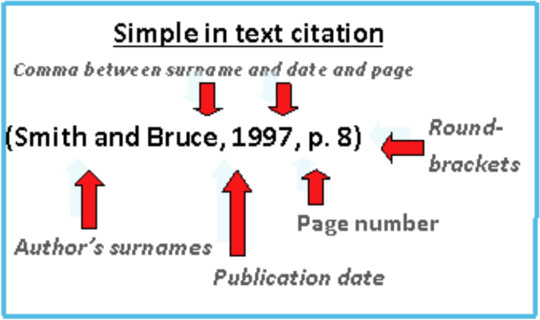

Project
Your final research report in BA3a must include:
A cover page
An abstract
A table of contents
A table of illustrations (if your work is illustrated)
An introduction
The body of the report (divided into chapters)
A conclusion
And may include appendices if you have supporting evidence you need to include
For this project (BA2b) you must submit:
An essay question/title (can be refined later on)
A table of contents (a list of chapter headings that you propose to write about in the final report)
A draft of chapter one (edited and proofread, with Harvard citations in place)
A bibliography of sources used, and sources you plan to use (Harvard style)
Chapters
Most standard reports (5000 words) have 3 to 6 chapters. Chapters can be different lengths. Give each chapter a heading (this also helps you stay focused on relevant information). In your chapter plan you need to show an element of antithesis within your report proposal.
Present your argument (the thesis) Consider the opposite view (the antithesis) Combine and compare the two (the synthesis = the conclusion of your essay)
The best reports are always…
Based on a subject the author is genuinely interested in
Planned carefully – in plenty of time
Submitted for feedback (several times)
Written by students who attend their tutorials
Redrafted as many times as needed
Supported with strong visuals
Questioning, analysing, evaluating
Critical Thinking
Whichever type of report you choose it’s important to take a questioning approach. Imagine you’re writing your paper for a future animation student. What makes it relevant, important or useful for that student to read?
3 stages of critical thinking- Describing (who, what, where, when). Analysing (how, why?). Evaluating (so what? What next?).
Or even think in these terms: Past (origins, evolution, timeline of key events). Present (anything topical in the news?). Future (how might things develop/change?).
Use the 2-page technique- more info on powerpoint if needed.
Writing a research question- If you come up with ideas for a title/question, I can help you refine it. Consider a short sharp title for impact, followed by a subtitle that’s more explanatory. Keep your research question in mind as you’re writing (but be open to altering/refining the question as your research progresses).
A research report should be based on your investigative research. However… once you’ve done the research, your own informed opinion is very important. You’re the one who chooses how to shape and present that research. In fact, it’s the reason you’re writing it: to add your own voice to the body of existing work on this topic.
Keep a note of your sources
Do this as you go along (you will save yourself a lot of time and trouble). For web sources you need the date you accessed the site, as well as the title of the page, the URL, the author (if known), the date of publication/uploading. For print books make a note of the page reference of anything you might be quoting directly (especially if you’re using library books…) It can help to scan or photograph the copyright page.
Take a photo or scan the copyright page of any print books you use (see example on powerpoint).
TASK- Speed research: what can you learn in 30 minutes? Our group had JEWELLERY. I found a Peter Hinks book on nineteenth century jewellery with information such as gold was a source of metal and only by melting old jewellery it could be used.
Prepare for your first tutorial
Choose a potential topic (or topics).
Use the 2-page technique: things you know already on page 1; things you need/want to find out on page 2 (including ways you might do that).
Be able to explain how this topic links to your own animation practice, or future intentions.
I need to see written evidence of the research you have conducted so far (whether handwritten or typed notes, or entries on your research blog)
Abstract
No need to worry about this for BA2b, but when you come to write your final report next year you’ll need to include something called an ‘abstract’. An abstract is a short summary that describes (summarises) a longer piece of work. In the case of your research report, it will be one or two paragraphs long (and 250 words maximum). It appears at the beginning of your research report (but it will be written at the end). It contains a general summary of your report and includes a sentence in which you state your conclusion. An abstract is important because it helps a reader decide very quickly whether or not a research paper is useful or relevant.
For BA2b you will not need to submit your abstract or ‘introduction’.
Recap
For this project (although it’s called the ‘Proposal’) you will be writing 1000 words of the report itself. This will usually be the first chapter (possibly including part of chapter 2. We’ll discuss this in your tutorials). You will also be ‘proposing’ the format your final report will take, including a title, a chapter plan, and a bibliography (which may also include sources you intend to consult). If you have any questions, please email [email protected] or speak to Peter.
0 notes
Text
Research Report- Contemporary Contexts in Animation Culture
I am a bit late but these are the notes I made from the first lecture we had with Lynsey. The following information was taken either from her powerpoint or what she has taught us and I think it will be useful for me to look at for a reminder throughout this project:
You’ll submit a research report proposal of at least 1000 words which will counts towards your final word count (5000) for the completed research report you’ll submit next year.
The proposal must include: The (proposed) title of your report, a plan or outline for the full report (a Table of Contents), your title can be rough at this stage but needs to show the general purpose of your report, your proposal needs to show the full scope of your final report which will be divided into chapters (usually between 3 and 6). An edited and proofread draft of chapter one of your report (1000 words) with appropriate communication and presentation of your ideas (i.e. your writing style), a bibliography of sources used (and those you plan to use) and show evidence of thorough research, a blog showing your research and progress as this counts strongly towards LO9 (showing the ‘development’ of your skills).
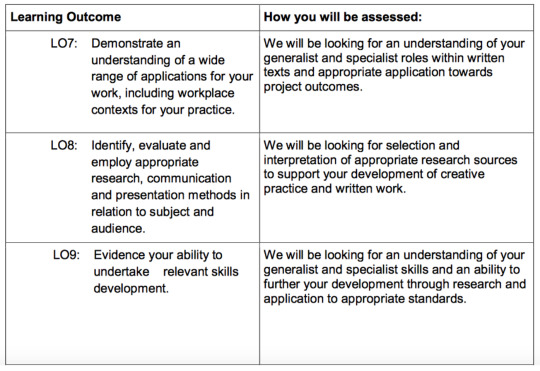
Chapter One: usually an overview chapter, containing essential background information that will help contextualise the rest of your report and define any (unfamiliar) terms you intend to use. (Information is usually organised chronologically in a research report.).
This project will help with next years BA3a by: letting you reflect on suitable topics to write about, choosing the right report type for your topic (5 types), getting to grips with the required writing style, making a start on your bibliography, timing your self and not leaving everything for the last minute, starting before other students on other courses.
The following diagram Lynsey showed was quite amusing!
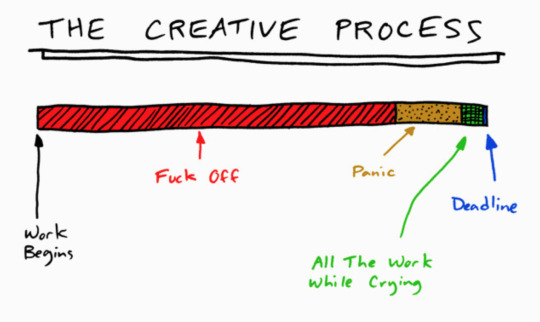
You need to understand the submission guidelines.
All writing begins with a single word, write one word at a time. Advice by Stephen King (whose longest novel, The Stand, is 1,153 pages)- “Whether it’s a vignette of a single page or an epic trilogy like ‘The Lord of the Rings,’ the work is always accomplished one word at a time.”
Advice- Studies have proven that setting yourself the target of working for five minutes per day on a particular project is a great way to trick your brain.
Examples of topics from previous research reports:
-The uses of animation in propaganda.
-The power of the animated medium to influence environmental change.
-The representation of minorities in the media.
-The ‘Strong Female Character’: Feminist Role Model or Patronising Stereotype? (as an examples there is Katniss Everdeen).
-Shintoism in Studio Ghibli.
-The Uncanny Valley.
-An Analysis of Romantic Relationships in Western Animated Feature Film . (Frozen was an example).
-Visit the library, even online to see examples of previous Student Research Reports, here is the link https://net.nua.ac.uk/wiki/library:student_research_reports
Research report- A research report literally reports on the findings of your research. The reason you write one is to know more about your chosen area of expertise. Also it’s a great opportunity to explore a personal interest or passion (so long as you draw clear links with animation). It’s about finding out things you don’t already know so there needs to be research before you can report on it.
For this project you’ll be writing the first 1000 words of your report and next year in Ba3a you’ll complete the report by writing another 4000 words for the total of 5000. You can choose to write 10,000 words instead but there are certain rules that come with it. I think I would have enjoyed doing the 10,000 words but going based off the previous few times that I have handed in a written task that it is better if I don’t push it. I think once I feel confident doing something then I can start to add things to it.
5 types of reports
-Extended essay -Industry report -Technical report -Reflective research report -Editorial
You are expected to confirm in your proposal which format of report you will use, and whether it will be 5,000 words or 10,000 words.
Extended essay
Quite straightforward as it is a standard academic essay. This takes a theoretical or historical topic that addresses an aspect of visual culture, and uses the writing conventions similar to an academic essay or paper. Your research would usually be based around reading and understanding secondary and primary texts on your subject and, where appropriate, visual analysis.
Industry report
Entirely industry based, an analysis of industry roles and practices. Topics concerning aspects of industry or media practices, related to your area of practice and study may be presented as an industry report. Examples might include a report considering viral advertising techniques; the ethics of the British textile industry; or surviving as a freelance artist or designer in Norfolk. Your research could include trade journals, interviews, financial reports and marketing data in addition to books and websites.
Technical report
An analysis of technical experimentation. Based on your own work; this must be experimental in nature (e.g. mixing two or more genres of animation). More challenging than an extended essay. You may choose to examine processes, techniques and/or media that you use in your studio practice, and to use your report to document and analyse the results of your investigation. For this type of report there would usually be a review and analysis of current and/or historical practices using the techniques or materials in question and rationale for your experiments. This report requires a high degree of independent working and organisation; for example, you’ll need to finish your practical experimentation ahead of time in order to write up the findings in your report.
Reflective Report
This is a critical reflection both on your own working practice and the work of others. You will analyse and evaluate your influences, explaining how you’ve incorporated these into your own work. A reflective report directly addresses your practice. You may well combine the styles of report described above and include sections that address relevant theories, historical references, cultural phenomena, industry information and technical experimentation and development. This type of report would give a holistic view of your studio practice and allow you to critically reflect on your work and development. BUT it’s not simply a case of ‘I did this’ and ‘then I did this’ for 5000 words…Last year’s best reflective report (‘Portrait of an Animator’) blended extensive research into the history of self portraiture with the student’s own focused experimentation and practice.
Editorial
Consists of an article (suitable for publication) and an analysis of that article. Requires two different writing styles: journalistic and academic. Needs to be targeted towards a particular publication. A little more challenging than a straightforward extended essay. This option allows you to choose to write an article that is suitable for a specific magazine, newspaper or journal. With this choice of format the intention is to enable you to write a research Report that supports and integrates with your visual work and creates a synergy between the two. Your article should be accompanied by a supporting text that details your research on the subject chosen, and your rationale for the style and topic of the article for the publication you have chosen. The supporting text would require rigorous evidence of research, references and a full bibliography. The overall word count remains 5,000, with your article ideally being no longer than 2,000 words and the supporting text taking up the remainder of the word count. The article should, of course, be an appropriate length for the publication.
0 notes